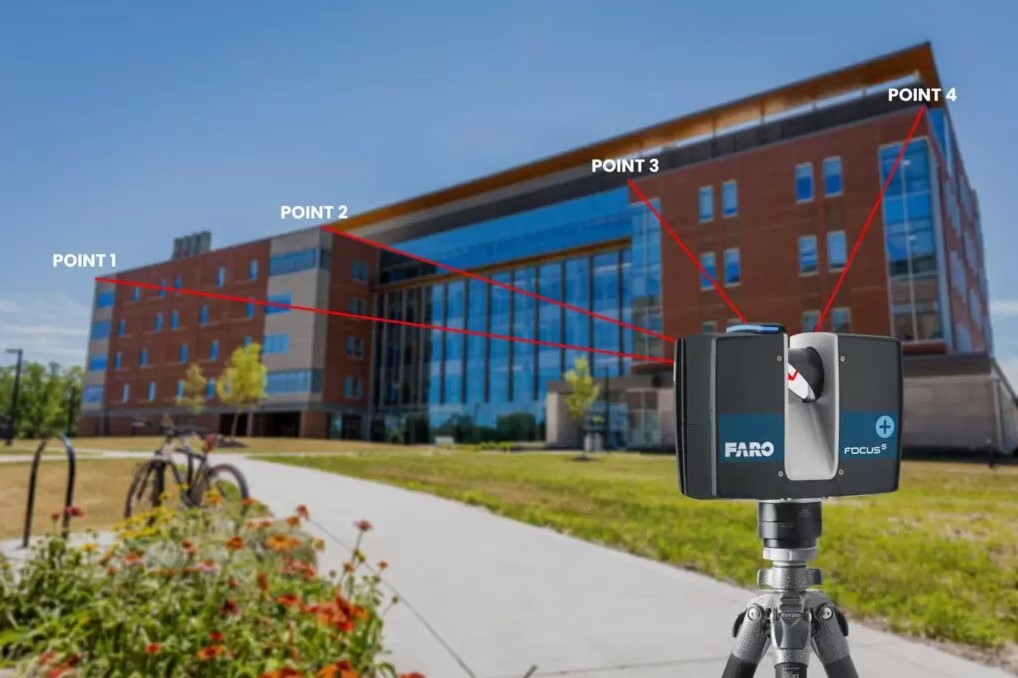Demystifying the Scan to BIM Workflow: From Point Clouds to Intelligent Models
 Zara Anderson
Zara Anderson
The Scan to BIM Workflow bridges the physical and digital worlds in construction. This article delves into the technical aspects of this innovative process, exploring how real-world spaces are transformed into intelligent BIM models. By understanding the intricacies of the Scan to BIM Workflow, you'll gain valuable insights into its potential to revolutionize construction workflows.
Capturing Reality: 3D Scanning Technologies
The journey begins with capturing the existing building or infrastructure using advanced scanning technologies:
LiDAR (Light Detection and Ranging): LiDAR scanners emit laser pulses and measure the reflected light to create a highly accurate point cloud, representing millions of data points in 3D space. This method excels in capturing precise geometry and excels in well-lit environments.
Photogrammetry: This technique utilizes multiple overlapping photographs from strategically chosen viewpoints. Specialized software then analyzes these images to reconstruct a 3D model of the scene. Photogrammetry is cost-effective but may be less accurate in capturing intricate details or in low-light conditions.
Processing the Point Cloud: From Raw Data to Usable Information
The captured raw scan data, often referred to as a point cloud, requires processing before BIM software can utilize it. This stage involves several crucial steps:
Registration: Multiple scans, taken from different viewpoints, need to be aligned and merged to create a cohesive point cloud representing the entire space. Registration software utilizes common features in overlapping scans to achieve precise alignment.
Cleaning and Noise Reduction: The point cloud may contain extraneous data like stray points or reflections. Filtering algorithms are employed to eliminate noise and ensure the point cloud accurately reflects the actual building elements.
Feature Extraction: This step involves identifying and extracting building components like walls, floors, ceilings, doors, and windows from the point cloud. Semi-automated tools can assist in this process, but human expertise remains essential for accurate feature extraction.
Building the Digital Twin: BIM Modeling from Point Clouds
With a clean and processed point cloud, the magic of BIM software comes into play:
Modeling Software: BIM platforms like Revit or ArchiCAD allow users to import the point cloud data. Here, skilled modelers leverage the point cloud as a reference to create intelligent BIM models.
Model Creation: Building elements are meticulously modeled by tracing the point cloud data, assigning specific properties like materials, thicknesses, and classifications. This process transforms the point cloud from a geometric representation into an information-rich BIM model.
Quality Assurance and Deliverables: The completed BIM model undergoes rigorous quality checks to ensure accuracy, completeness, and adherence to project specifications. The final deliverable is a BIM model that can be integrated with other project data and workflows for various downstream applications.
The Technical Nuances: Beyond the Basics
The Scan to BIM process offers a level of detail and accuracy unmatched by traditional methods. However, some technical considerations come into play:
Level of Detail (LOD): The required detail level in the BIM model can vary depending on project needs. Higher LOD models capture intricate details like MEP (Mechanical, Electrical, and Plumbing) systems, while lower LOD models may focus on overall geometry.
Data Management: Large point cloud files can be data-intensive. Efficient data management strategies are crucial for smooth workflow and collaboration throughout the project lifecycle.
Integration with BIM Workflows: Seamless integration of the Scan to BIM model with existing BIM workflows involving design, cost estimation, and facility management is essential for maximizing the value proposition.
The Future of Scan to BIM: A Data-Driven Construction Future
Scan to BIM is rapidly evolving, and technological advancements promise further improvements:
Automated Workflows: Advancements in artificial intelligence (AI) and machine learning (ML) hold the potential for automating various stages of the Scan to BIM process, leading to faster and more efficient workflows.
Integration with VR/AR: The integration of Scan to BIM models with virtual reality (VR) and augmented reality (AR) technologies can revolutionize stakeholder engagement and visualization capabilities within the construction process.
By understanding the technical aspects of the Scan to BIM workflow, construction professionals can leverage this powerful technology to create intelligent and data-rich BIM models, ultimately contributing to a more efficient, informed, and data-driven construction future.
Subscribe to my newsletter
Read articles from Zara Anderson directly inside your inbox. Subscribe to the newsletter, and don't miss out.
Written by
